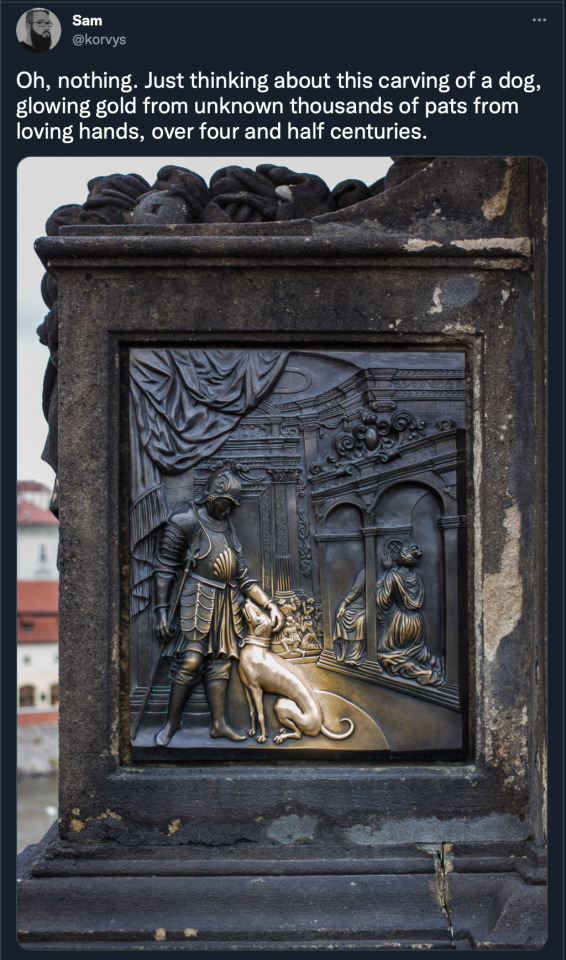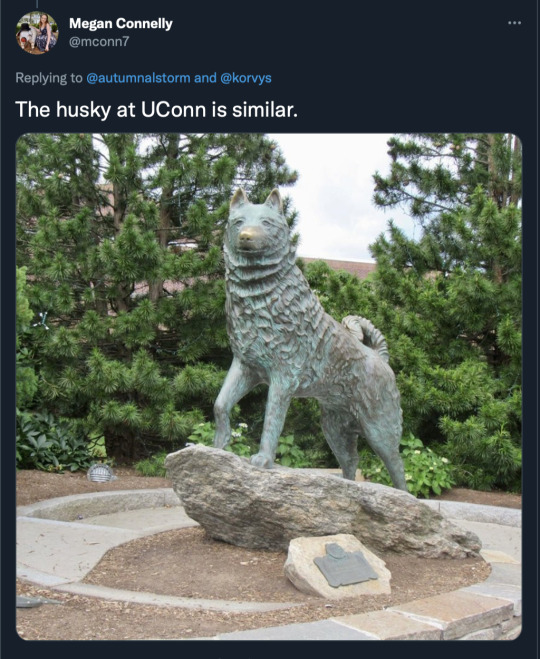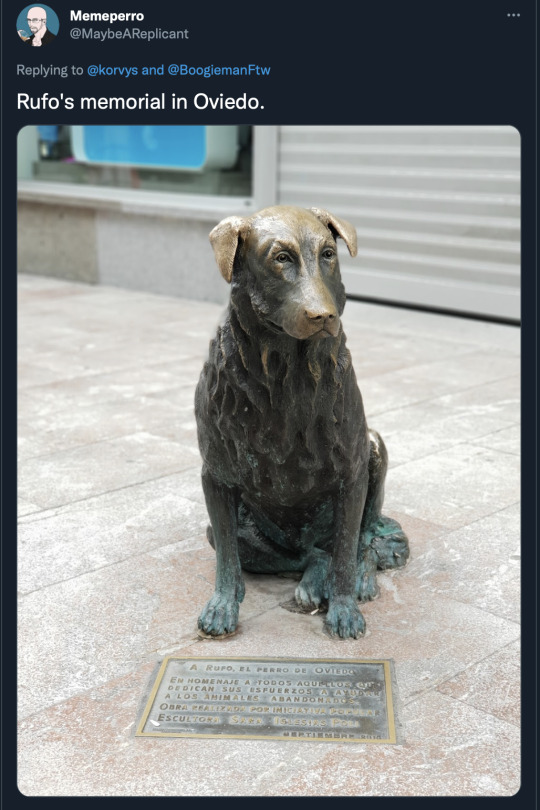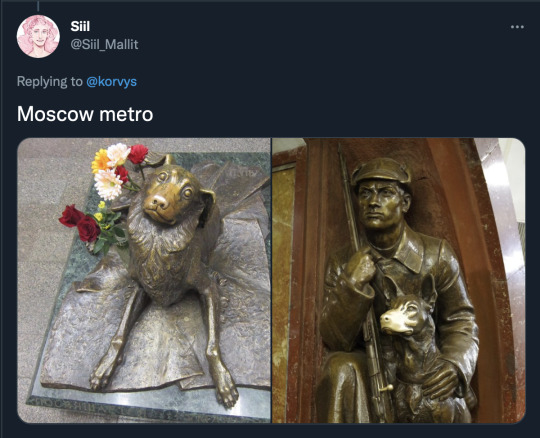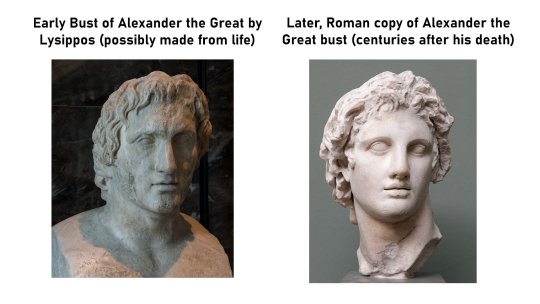Text
I was a security guard at a major art museum
Over the course of my time there:
-A woman came in with a skirt made of neckties. Just. Neckties, all strung together to make a skirt. She had leggings on underneath, thank god.
-Been asked for the Mona Lisa
-Been asked for the Sistine Chapel
-Been asked where the dinosaurs are
-Been asked where the animals are
-Been asked for “The Bitch With The Pitcher” (Vermeer’s “Woman with a Water Pitcher,” by the way)
-Been asked for “The Girl With The Pearl Earring”
-Been asked for the Mona Lisa
-Got bored and learned the name of every single one of the Buddhas
-Got bored and learned the name of five Chinese dynasties (long day in Asian Art)
-Chilled in the Buddha room
-Watched someone escorted out for trying to take a nude photo in the Arms and Armor section
-Been asked for the Michelangelo’s, then the Raphael’s, then the Leonardo’s, then the Donatello’s (they were naming ninja turtles)
-Heard curator in Musical Instrument section play Night On Bald Mountain on giant historical pipe organ while laughing maniacally.
-Fielded a day when a filthy counterfit version of the museum program was disseminated among visitors, guiding them to the filthiest art in the museum – such as the painting of Cupid peeing on Venus
-guarded Cupid peeing on Venus
-Been asked for the Mona Lisa
-Been asked if I had seen the First Lady of Mexico (she had gone missing)
-Been asked for that one sculpture of Kronos that is featured in Percy Jackson WHICH DOESN’T EXIST GUYS (directed children to sculptures of Poseidon with trident instead, children were very happy)
-Witnessed two Secret Service Agents get into a swordfight with pieces of packing material.
-been asked by a very polite Fransiscan monk in full brown robes if he had found ‘One of us. He has gone missing.”
-Found missing monk and returned him to the herd
-Coworker was asked for the Ark of the Convenant
-Same coworker was asked for the Baseball Hall of Fame
-stopped about 15,000 people from poking that one lion statue in the nuts
-saw a woman in a banana suit with banana shoes take a picture in front of an Egyptian temple
-Been asked for the Mona Lisas (plural)
I’ve got more but this is what I remember for now.
60K notes
·
View notes
Photo
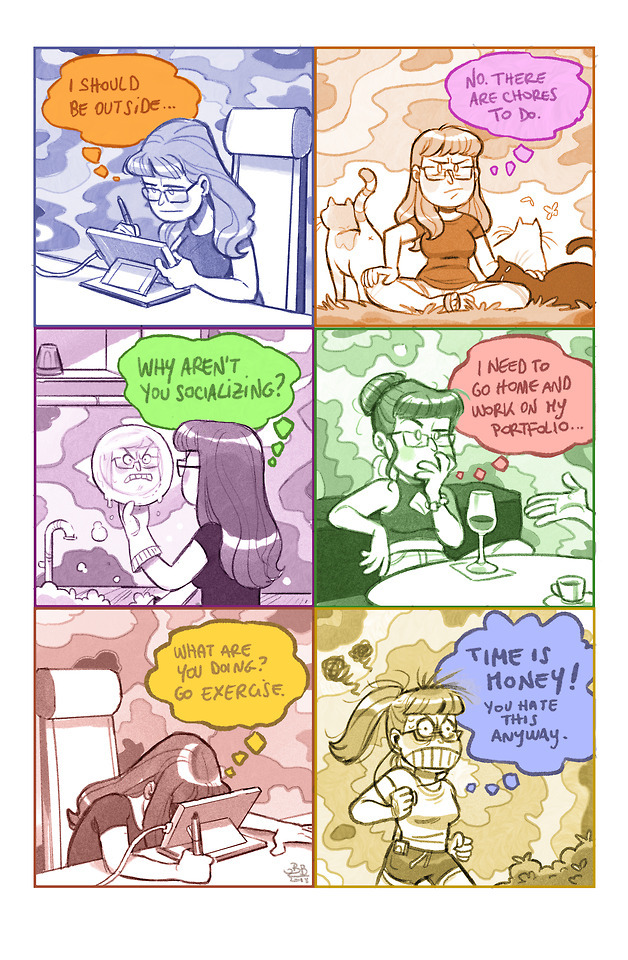
Sorry for this relatable shit. My anxiety has been a bitch lately.
148K notes
·
View notes
Text
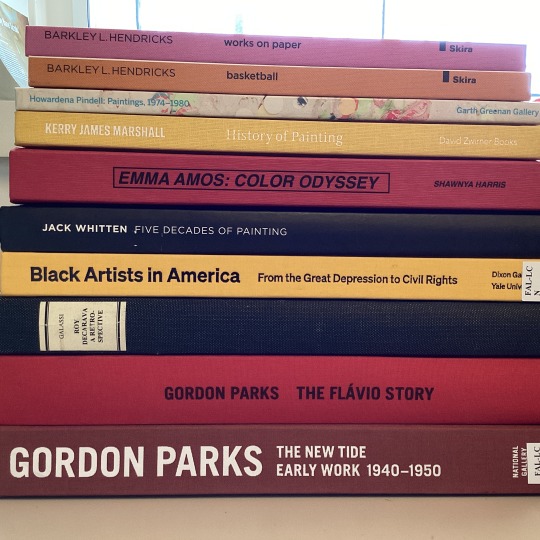
#BlackResistance
The Association for the Study of African American Life and History (ASALH) summarizes this year’s theme “Black Resistance” as follows: "African Americans have resisted historic and ongoing oppression, in all forms... These efforts have been to advocate for a dignified self-determined life in a just democratic society in the United States and beyond the United States political jurisdiction… This is a call to everyone, inside and outside the academy, to study the history of Black Americans’ responses to establish safe spaces, where Black life can be sustained, fortified, and respected. "
By resisting, Black people have achieved triumphs, successes, and progress. Black artists, along with other creatives, employ various media to tell stories and create change.
Here is another stack of books that celebrate Black artists whose work resists the status quo, challenges the system, and calls for awareness of the myriad of issues affecting Black people’s lives.
Barkley L. Hendricks : works on paper. HOLLIS: 99155235696303941
Barkley L. Hendricks : basketball. HOLLIS: 99155776869903941
Howardena Pindell : paintings, 1974-1980. HOLLIS: 990145322360203941
Kerry James Marshall : history of painting. HOLLIS: 99153829093703941
Emma Amos : color odyssey. HOLLIS: 99155279216703941
Jack Whitten : five decades of painting HOLLIS: 990145227350203941
Black artists in America : from the Great Depression to civil rights. HOLLIS: 99155993050103941
Roy DeCarava, a retrospective. HOLLIS: 990067852100203941
Gordon Parks : the Flávio story HOLLIS: 99153691397803941
Gordon Parks : the new tide, early work, 1940-1950. HOLLIS: 99153723466203941
#BlackHistoryMonth
#BlackResistance
#Blackartists
#GordonParks
#RoyDeCarava
#JackWhitten
#HowardenaPindell
#EmmaAmos
#KerryJamesMarshall
#BarkleyHendricks
#HarvardFineArtsLibrary
#Fineartslibrary
#Harvard
#HarvardLibrary
Stack of books. Titles are listed in the post.
#black history month#book recommendations#black artists#recommended reading#harvard library#reblog#art history#history of art#art historian#art history 101
20 notes
·
View notes
Text
your minimalist child getting destroyed by my baroque baby
36K notes
·
View notes
Text
Team no gray floors!!


39K notes
·
View notes
Text
Maybe get a little more creative when naming your museum?
#national gallery#art museum#art poll#art history#history of art#art historian#new poll#art museums#art gallery
10 notes
·
View notes
Text
Why are we freaking out about vanilla extract right now?
woke up and someone spilled vanilla extract all over my dash, so as punishment you strange little beasties are getting all the VANILLA FACTS i know:
vanilla is the 2nd most expensive spice in the world (2nd to saffron)
which is why more than 99% of what we call "vanilla extract" is actually vanillin (vanilla's dominant flavor compound) and is not extracted from real vanilla.
luckily, even professionals struggle to tell the difference when it comes to things like baked goods. but there is a distinct difference in non-heat treated products like vanilla ice cream. real vanilla has a more complex, individualized flavor profile.
why is vanilla so expensive? because it is a ridiculously delicate & demanding crop. complete primadonna.
vanilla beans come from vanilla orchids. these crazy flowers bloom for A SINGLE DAY and have to be HAND-POLLINATED in a process that is exhausting, delicate, and requires specialist knowledge passed down over generations.
then, if you're lucky, you get vanilla beans.
which then require months of further specialized treatment.
the entire process takes about a year and can go wrong at any stage


vanilla has been cultivated for over 800 years (possibly much longer). the first known cultivators are the Totonac, an indigenous people of Mexico.
the Aztecs used it as a sweetener to balance out the bitter taste of cocoa. it was popular in a drink called xocolatl--the precursor to modern hot chocolate!
it is only pollinated by a very specific orchid bee!!!
which is why no fruit could be grown outside of Mexico until the 1800s
Edmond Albius, born into slavery, invented the pollination method we still use today--launching a global industry when he was just 12 years old.
today, the majority of the world's vanilla is grown in Madagascar
if you want real vanilla, read the labels carefully--it's harder to find than you think!



in conclusion, those tiny black specks you see in fancy vanilla ice cream? those are vanilla bean seeds! itty bitty orchid seeds!!! they are delicious and also a PRISSY BITCH!
(src)
61K notes
·
View notes
Text
Glances at Modern Art
My toxic trait is seeing literally any craft and thinking I could do that.
22K notes
·
View notes
Text
“Artists’ bios and titles in leading museums should be more sensitive to the complex historical narratives that inform their art.”
— Lisa Korneichuk
15 notes
·
View notes
Text
my mom didn’t raise a quitter. she raised a perfectionist who’s so afraid of failing they don’t start anything to begin with
21K notes
·
View notes
Text
* It was supposed to last forever *
I think a lot about how we as a culture have turned “forever” into the only acceptable definition of success.
Like… if you open a coffee shop and run it for a while and it makes you happy but then stuff gets too expensive and stressful and you want to do something else so you close it, it’s a “failed” business. If you write a book or two, then decide that you don’t actually want to keep doing that, you’re a “failed” writer. If you marry someone, and that marriage is good for a while, and then stops working and you get divorced, it’s a “failed” marriage.
The only acceptable “win condition” is “you keep doing that thing forever”. A friendship that lasts for a few years but then its time is done and you move on is considered less valuable or not a “real” friendship. A hobby that you do for a while and then are done with is a “phase” - or, alternatively, a “pity” that you don’t do that thing any more. A fandom is “dying” because people have had a lot of fun with it but are now moving on to other things.
I just think that something can be good, and also end, and that thing was still good. And it’s okay to be sad that it ended, too. But the idea that anything that ends is automatically less than this hypothetical eternal state of success… I don’t think that’s doing us any good at all.
196K notes
·
View notes
Text

#I’m going to steal the declaration of independence#national museum of natural history#hope diamond#chaos#museum heist#reblog#tiktok
29K notes
·
View notes
Text
Art History Reader: The History of Green

Claude Monet, The Japanese Footbridge, 1899, National Gallery of Art, Washington D.C.
Green means GO! Beginnings are Green. Green means to grow! Fresh and peaceful; compostable and environmentally friendly. Green sounds like cicadas and fresh lettuce.
Green is a secondary color made from mixing Yellow and Blue. It is complimentary with Red. Green is Muhammad’s favorite color and symbolizes serenity and calm. Paradise. Green smells like lime and mint mojitos. Green feels like smoking and sitting in grass. Grand views of rolling hills. A popular color to wear during pregnancy, It represents renewal, regeneration, and rebirth. Green is youthful. A Greenhorn is inexperienced. A Greenroom is a space to rest. Green is recyclable. Green can be heroic. In his infamous Green cloak, Robin Hood liberates hoards of money from Green-eyed, greedy Grinches.
Green is untrustworthy. In China, a Green hat signifies infidelity; It is unlucky to wear it on the stage and unlucky to drive on the racetrack. A Green witch terrorizes Emerald City. Noxious and humid, Green is acidic mountain dew, Nickelodeon slime, and toxic waste. Nothing is less appetizing than Green eggs and ham. (Maybe Green beans.) Sick, nauseous, it tastes like bitter celery and salty seaweed. Green is the most dangerous pigment in the world. It’s historically fussy and notoriously hazardous to work with.
History:
Green was one of the first pigments attempted by early artists; plant pigment, chlorophyll, fades with time. Ancient Egyptians made it by combining crushed malachite and copper minerals which would eventually oxidize into Black. Ancient Romans would throw a copper plate into a vat of wine which produced a beautiful blue-green. It was unstable, it could not resist dampness, it did not mix well with other colors, and it was toxic. Leonardo da Vinci, in his treatise on painting, warned artists not to use it.
In 1775, Carl Willhelm Scheele made a truly stunning, vibrant Green pigment. The ‘it’ color of the Victorian era, Scheele’s Green became so fashionable that it was seen everywhere from make-up, clothing, toys, and, famously, Napoleon Bonaparte’s bedroom wallpaper. I subscribe to the popular theory that this wallpaper was the cause of his death because this pigment was made from arsenine (a known poison).
That deadly pigment was replaced with an equally deadly pigment made with a mixture of arsenic and copper. Paris Green was named for the Parision Impressionists who were deeply inspired by nature and mostly painted en plein air (outside). Paris Green was most likely the culprit behind Paul Cezanne’s diabetes, and Claude Monet’s blindness. In his painting The Japanese Footbridge, Monet uses this poisonous Green together with the symbol of a bridge to revive hope for a peaceful future. Green represents a fascinating aspect of human nature: many are willing to die for beauty in art.
In Kassia St. Clair’s The Secret Lives of Color, she references a Buddhist fable about Green. In the story a deity visits a boy in a dream. The deity tells him that in order to obtain everything he’s ever wanted he only has to close his eyes and not picture Sea Green. There are two possible outcomes to this tale: either the boy succeeds and finds enlightenment or the boy is consumed by failure until his life and sanity fade away.
Outcome #1: Enlightenment
Don’t picture Sea Green.
I’m not delusional enough to claim that I know the secret to enlightenment. However, I can say with certainty that, If I were the boy from this tale, my enlightenment would be guaranteed. Perhaps I found a 4-leaf clover in a past life because, luckily, I have aphantasia (I lack visual memory). I can’t picture any color! But, beyond lacking the ability to ‘see’ with your eyes closed, I have no further advice for achieving enlightenment. Instead I can advise you on how to fail.
Outcome #2: Insanity and Death
Picture Sea Green.
The first issue lies with language. What color is Sea Green exactly? Language has never been quite able to categorize color concretely. (In many languages, such as Japanese, there is no distinction made between Green and Blue). Many have laid claim to the title. Pantone, Crayola, and Copic have all made their opinions known (although I doubt a deity would respect the authority of any company or brand). The truth is that, technically, there are many colors that could be and are referred to as Sea Green.
Another issue is how our eyes and brains understand color. For example, If you were to look at a 4-leaf clover it would appear Green. That’s because some light is hitting the clover and being absorbed, while other light bounces off and hits our eyes. The color that we see is precisely the color the clover is not. Which inevitably leads to the question of whether or not color even exists in reality.
Let’s assume that ‘reality’ doesn’t matter. Then there’s the problem that anyone who has spent any time looking at the sea would know that it oscillates infinitely between innumerable shades. The truth of the matter can be spun a couple ways. One, because of reflections the sea has been every color. Two, the sea is made of water which is technically clear, and therefore it has no color. So Sea Green is both everything and nothing.
Green reminds us that everything dies and that life is ephemeral. Born again, it always returns with the spring. Green is life and therefore essential. Unavoidable yet hard to grasp. It is everywhere in our natural world. It is hope. And although we now have access to a few non-deadly Green pigments, artists rarely use pre-made Green; they prefer to mix it themselves. Ultimately, mixed Greens come the closest to permanence.
Related Works of Art:
The Arnolfini Portrait by Jan van Eyck
Lucretia by Paolo Veronese
Orpheus Leading Eurydice from the Underworld by Jean-Baptiste Camille Corot
Luncheon on the Grass by Édouard Manet
Green Wheat Fields, Auvers by Vincent van Gogh
The Japanese Footbridge by Claude Monet
Mont Sainte-Victoire with Large Pine by Paul Cézanne
Blue Green Red by Ellsworth Kelly
Green Kiss/Red Embrace (Disjunctive) by John Baldessari
Green Table by Jenny Holzer
By: Danni Lin
9 notes
·
View notes
Text
Art History Reader: Antonio Sant’Elia and Futurism

Detail from La Città Nuova (The New City) by Antonio Sant’Elia, 1914. Source.
Como, Italy. An idyllic town alongside Lake Como known for its stunning scenery and gorgeous architecture. It is, after all, the same lake where George Clooney keeps a home. But did you know Como is also home to a collection of drawings by a radical architect considered to be the father of modern Italian architecture? It’s true! So sure, you could visit Lake Como to try and catch a glimpse of the rich and famous on vacation. Or you could pop into the Pinacoteca di Como to view the work of the groundbreaking Italian Futurist architect Antonio Sant’Elia, whose architectural designs have been hugely influential since the early 20th century – even though none of his Italian Futurist works were ever built.
When Sant’Elia joined the Italian Futurists in 1914, he was a young architect at the beginning of his career. Born in Como in 1888, he studied architecture and eventually settled in Milan. Milan was the home base for the Italian Futurists at the time. Considering Sant’Elia was already active in the avant-garde scene, he would have been quite familiar with the group before joining them. The Italian Futurists viewed themselves as a cultural movement. They wanted to shock Italy into the future through art: painting, sculpture, poetry, fashion, photography, and architecture. To achieve this, they embraced the speed and violence of modern life. They celebrated the changes brought on by industrialization, like the automobile and electric street lights. They often used the term dynamism to describe the chaotic, vigorous energy they wanted to express through their work.
Shortly after Sant’Elia joined the Italian Futurists in 1914, he published the “Manifesto of Futurist Architecture.” This was the group’s first manifesto on architecture. Sant’Elia’s text outlined what the Futurists despised about the architecture of their time and the changes they wanted to make. But why a manifesto? This was the best way to share your ideas with others in the early 20th century… before smartphones made us super connected all the time. These printed texts could be easily reproduced and distributed. It was very common at the time for new architectural and artistic movements to use manifestos to share their ideas. The Italian Futurists had manifestos on everything.
In the “Manifesto of Futurist Architecture,” Sant’Elia decries the state of architecture in Italy. He outlines architecture how he sees it, criticizing Italian architects for turning to historical architecture or architectural styles from outside of Italy for inspiration. This isn’t modern architecture, he explains, rather it is exactly what is keeping architecture from being modern. According to Sant’Elia, the objective for the Futurist architect is not simply to rearrange the design of buildings. The Futurist architect must reinvent architecture from the ground up.
But what was Sant’Elia trying to accomplish through his manifesto? Let’s do an exercise to understand what the Italian Futurists and Sant’Elia were challenging. What do you think of when you think of Italian architecture? If you’re like most people in the early 20th century (and truthfully, most people today), when you think of Italian architecture, the buildings that probably come to mind are something along the lines of the Pantheon in Rome, or the Duomo in Florence, or the palazzos of Venice. These are examples of Italian architecture steeped in history from the periods of ancient Rome, the Renaissance, and the Baroque. But what about now? What architecture do you think of that represents modern or contemporary Italy? Anything? Nothing? If your answer is nothing, that’s the problem the Italian Futurists were trying to solve. But they were thinking about this over one hundred years ago! Italy was – and still is – known for its historical past. But the Italian Futurists were interested in the now. And in the future. So how does that translate into architecture?
Let’s take a look at Sant’Elia’s drawings titled “La Città Nuova,” or “The New City '' in English. The “Manifesto of Futurist Architecture'' was illustrated with this series of drawings depicting enormous megastructures. In this series Sant’Elia rejected the idea of the horizontal city. Instead, as we see in “La Città Nuova,” he designed massive vertical structures, forecasting the skyscrapers that would come to define the contemporary metropolis. At the beginning of the 20th century, skyscrapers were new and exciting. They were the future. And in order to build these enormous megastructures, the latest building methods would need to be used. There was no place for wood or stone in Sant’Elia’s design. Those were the old building materials used in previous centuries. Steel. Concrete. Mass-produced glass. These were the materials of the future! These were the materials building the skyscrapers of the time.
The iconic Woolworth Building in New York City had just been completed only a couple years before the publication of Sant’Elia’s manifesto. At almost 800 ft in height, with 58 stories, the Woolworth Building would remain the tallest building in the world until 1930. But would Sant’Elia and the Italian Futurist have approved of the Woolworth Building? No! Absolutely not. But why not? Because it was designed as a Gothic Revival skyscraper. It was another example of what they were trying to fight in architecture. The building of the future – the skyscraper – being built in a style of the past.
To create the architecture of the future, Sant’Elia declared that Italian Futurist architecture would reject the past. For centuries, Western architecture had sought to mimic previous architectural styles. Neoclassicism utilized architectural elements, like columns in the Greek orders, that were first used by the ancient Greeks, then by the ancient Romans, then by Italian Renaissance architects, then…well, you get the idea. Another Western architectural style, Gothic Revival, styled houses, shops, skyscrapers like the Woolworth Building, and more to mimic the appearance of the soaring Gothic cathedrals of Medieval Europe. So, to reject the past, Sant’Elia rejected ornamentation. In “La Città Nuova,” we see his sleek megastructures, free from the useless decoration of pediments and ribbed vaulting. And even though Sant’Elia’s designs remained unbuilt, it’s his ideas on how to design for the future that inspired generations of architects to come.
So, what is the legacy of Antonio Sant’Elia? Well, it’s complicated. On one hand, his work is hugely influential in the development of Western modern and contemporary architecture. No survey of modern architecture is complete without his “Manifesto of Futurist Architecture” and the images that accompanied it. Contemporary architects, like the late Zaha Hadid, have noted Sant’Elia’s work as an inspiration. His megastructure designs foresaw and influenced many Western architects working after World War II. Groups like Archigram and architectural styles like Brutalism explored the potential of megastructures, along with also rejecting historical ornamentation.
On the other hand, the appreciation of Sant’Elia today ignores the proto-fascist associations of the Italian Futurists, and thus, Sant’Elia’s work with them. The Italian Futurists were nationalists who advocated for war with the belief that it would be a hygienic cleanse for the world. These political beliefs influenced some of the objectives outlined in “The Manifesto of Futurist Architecture.” Understanding the Italian Futurists politics explains why they were against Italian architects looking outside of Italy for design inspiration. Keeping with their beliefs, they volunteered to fight in World War I. Two prominent Futurists, Sant’Elia and Umberto Boccioni, died during the war. It was Sant’Elia’s death, on the battlefield, that made him an icon worth celebrating under Italy’s fascist government led by Benito Mussolini. Sant’Elia became an architectural icon during this period. He was celebrated in fascist Italy because he was an Italian figure who could be proclaimed as an inventor of modern Italian architecture. After World War II, a great debate was had in the Western architectural world to “free” Sant’Elia from fascism. And it worked! We rarely discuss this aspect of his history today. But to deny it is to deny ourselves a complete understanding of his legacy and influence.
Now if you find yourself in Como, looking up at the glorious historical architecture, make sure to pop into the Pinacoteca di Como to say hello to Sant’Elia. And while you won’t find any built structures by him – just drawings – there is one structure in Como worth checking out during your Sant’Elia pilgrimage. The Como War Memorial, designed by the Rationalist architect Giuseppe Terragni, was based on a sketch by Sant’Elia himself. Dedicated to the victims of World War I and built by the Italian Fascist government, the monument is a fitting tribute to the complicated legacy of the great Italian Futurist architect.
Related Texts about Futurist Art and Artists:
Art History Reader: Modernism
Sartle School of Art History: Futurism
Umberto Boccioni
Unique Forms of Continuity in Space by Umberto Boccioni
Gino Severini
Dynamic Hieroglyphic of the Bal Tabarin by Gino Severini
Giacomo Balla
Dynamism of a Dog on a Leash by Giacomo Balla
Joseph Stella
Battle of Lights, Coney Island, Mardi Gras by Joseph Stella
Old Brooklyn Bridge by Joseph Stella
By: Ashley Gardini
1 note
·
View note
Text
Sartle Unveils New Quiz Feature

Test your art history chops with Sartle's exciting new quiz feature! Both fun and educational (that's kinda our thing), our new quizzes will challenge you to answer trivia questions about your favorite Sartle subjects.
When you're done admiring your genius, you can share your results to your socials to challenge your friends & family.

Our artist quizzes cover all the weird and wonderful biographical facts you'd want to share at a party - and will also test you on identifying their artworks among imposters.
Try out these artist quizzes and see for yourself if you can:
Tell us where Vincent van Gogh painted Starry Night
Identify Salvador Dali's mustaches
Pick sculptures by Michelangelo out of a lineup
Guess which famous politician Frida Kahlo had an affair with

Are you a teacher or a student of art history? You might also like our reader quizzes. A bit more studious than our artist quizzes - but just as fun! - reader quizzes will test your (or your students') knowledge of different art historical movements and overarching subjects.
Explore some of the following Reader quizzes to find out:
What's the deal with those Impressionists?
What the heck is Rococo?
Why were Baroque artists so dramatic?
Hungry for more? Get yourself a copy of Rogue Art History: The Trivia Game for more endlessly entertaining and fascinating facts!


By: Angelica Jardini
0 notes
